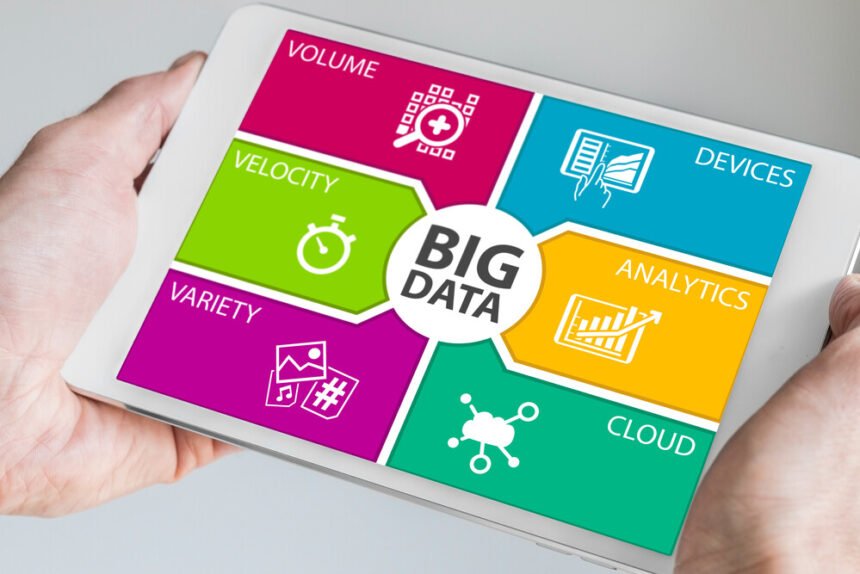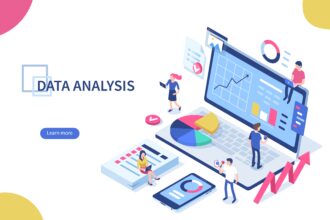Retailers around the world are discovering that big data can be incredibly valuable to their bottom lines. A growing number of businesses are starting to look for new data-driven approaches to streamline their business models.
However, your data-driven business model won’t be very helpful if you don’t focus on the right metrics. Take the time to evaluate your business model carefully and prioritize the right variables when trying to grow your retail business.
Targeting the Right Variables for Your Data-Driven Retail Business Model
When you’re running a retail business, whether a brick-and-mortar establishment, an online-only venture, or a hybrid option that sells on-site and through eCommerce, you should be regularly making use of data. There is information readily available these days to track, manage, and analyze, and it’s easier and cheaper to do so than ever.
However, if you’re like many retail entrepreneurs, you may watch your organization’s performance on things such as daily sales numbers and online website visitors, but not go far enough. There are many excellent metrics you can monitor to help you grow your business and meet your goals. Since your business is likely collecting more data than ever, you will want to capitalize off of it as much as possible.
Here are some of the most important metrics that data-driven retail businesses must evaluate to optimize their business models.
Sales Per Square Foot
If you pay for physical premises for your retail business, keep a watch on your sales per square foot numbers. As the name indicates, this metric shows you the number of sales you generate per square footage of sales-dedicated space in your store. It doesn’t include space used as stockrooms, staff lunchrooms, bathrooms, fitting rooms and other area that can’t directly generate revenue. Companies investing in big data are looking at sales per square feet to identify their company’s ability to monetize their real estate as much as possible.
Calculate this figure by taking your net sales and dividing this by the amount of sales space your venture has. If you have a reliable data analytics platform, then you can do this much more quickly. The result will help you understand the level of store productivity you achieve and how well you’re utilizing the available space. Plus, the metric can help you plan the best layout for your shop. You will want to use big data to improve this approach. You will find that big data is great for helping keep customers on site and maximizing sales.
Average Transaction Value
It’s good to know how much consumers spend, on average, with your store in one transaction. You can determine this figure by dividing the total value of all trades (revenue) by the number of transactions completed in a period.
This is one of the most important variables for retailers that invest in big data to evaluate. They can use customer data analytics tools to see the average value that can be earned from a given customer. They can compare this to the average CPA (cost per action) to see the average gross profit of a given customer.
Knowing this calculation gives you an idea of how much your customers spend and how many sales you need to make per period to generate the cash flow you’re after. A high dollar amount can come from people buying larger quantities of lower-priced goods or buying more expensive items. If you have a low average dollar per transaction metric, you may need to increase your pricing or look at sales strategies such as offering bundles and cross-selling and upselling to entice shoppers to spend more per order.
Sales Per Staff Member
One of the highest costs for most retail businesses is payroll. As such, ensure that the employees you hire bring as much value to the organization as possible. This is particularly crucial when it comes to sales staff. It pays to measure sales per employee throughout the year.
You may have a point-of-sale solution tracking individual employee sales, so you get specific data. If not, obtain a general idea of sales per employee by dividing your net sales by your number of employees. This metric is helpful when considering bringing on additional team members and thinking about staff schedules, bonuses, and other initiatives.
Sales per staff member is a frequently overlooked metric. Companies with a strong focus on big data should pay close attention to it, so they can squeeze the most value out of their employees.
Supplier Delivery On-Time Rates
Another significant expense for retailers is stock. You need to find the best possible suppliers to buy from who will be reliable long-term and get you inventory when you need it. It’s crucial to analyze supplier delivery on-time rates as a result. That is, how often do you get your orders within the promised timeframes? This element is something to investigate both when bringing on new vendors and when dealing with suppliers longer term. It can become a vital part of your supplier risk management process.
You’ll need to determine what constitutes on-time delivery to you since some orders are complicated with multiple deliveries coming from numerous locations, and therefore shipments that arrive at different times. No matter how you design your KPIs, remember that there will always be some issues out of your suppliers’ hands. Don’t expect 100 percent on-time delivery rates. However, suppliers who consistently hit above 90 percent in on-time shipments are doing a great job and will help you keep your buyers happy and sales rolling in.
Stock Turnover Rates
Also, keep a close eye on your stock turnover rates. This metric examines the number of times stock items get sold in a given period. Calculate it by dividing your cost of goods sold by your average inventory level. If this turnover is too low, you’re not moving through inventory quickly enough and can end up with too much slow or dead stock. This will eat up your cash flow and mean you lack the funds to order all the things consumers do want to buy.
On the other hand, if you’re selling out of product too quickly, this is also a problem. It indicates you’re not stocking up enough on the bestselling items and missing out on sales plus frustrating your customers in turn.
Other key metrics to keep track of include sell-through rates of each product, shrinkage numbers (loss of inventory due to theft, loss, damage, etc.), customer retention levels, and supplier defect rates. The more you track and work to improve results in these areas, the better your business will soar.
Retailers Must Use the Right Data to Improve the Profitability of their Business
Big data can be incredibly valuable for companies striving to maximize profits. Retailers, in particular, can benefit from investing in big data. The variables mentioned above should be incorporated into any retailer’s big data strategy.











